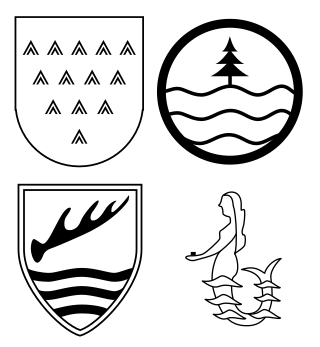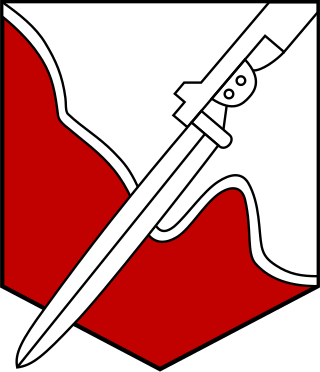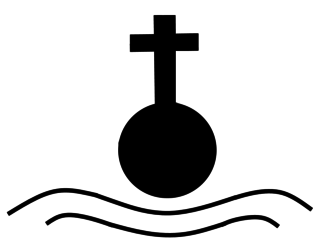History
The 708th Infantry Division was created in February 1941 in the region of Metz and Strasbourg, initially with two Infantry Regiments. Transferred to south west France as a static division in June manning on the coastal defenses in the Gironde / Bordeaux region. The 728. Infanterie-Regiment was in the Gironde estuary at Royan, the 748th at Lesparre in Médoc. The 360th is stationed at Soulac, Lesparre (Saint-Vivian)and at the Caserne Nansouty in Bordeaux. Both artillery battalions are in positions along the Gironde river (1) on 13 July the Division numbered 8123 men.(2)
The 708th division was split up on 2 July with the 360th regiment along with two fortress battalions and batteries remaining in the Gironde position under the command of Generalmajor Edgar Arndt. A new structure was formed on 13 July (3) and the field Division was appointed its former commander generalleutnant Herman Wilck. The division also received nine self propelled Marder 1 sdkfz 135 Panzerjager and twelve 88mm Anti tank guns from 2/AOK1 reserves at this time. The division commenced movement on 2 August by train and vehicles via Angers to the Mayenne and Sarthe region forming a triangle defensive position following the Mayenne River facing west defending the remaining non destroyed river crossing points. The northern most position was Domfront (Normandy), then south through Sept Forges, Ambrières, Ville Mayenne, and south to Laval then units were also placed in depth defending the national highway to Le Mans (German 7th Army HQ).
Most of the division was in place by the 5th, however the American task force Weaver of the 90th Infantry Division had already captured the important river bridge across the Mayenne river at Ville Mayenne on the morning of 5 August and formed a bridgehead driving deep towards Le Mans. The divisions 1st and 3rd battalions of 728th Regiment joined the counterattack on the breach flanks from the north as part of Kampfgruppe Oberst Coretti (Mayenne District Commander) on the 6th and 7th of August supported by the reconnaissance battalion Panzer Lehr, III battery Sturmgeschützbrigade 341, 1st Sicherungs Regiment, elements of flak Abteilung 496 and 124, a Radfahr battalion (30? or remnants of Osttruppen grenadier battalion 752?), Luftwaffe Landschutzen Kampfgruppe Lisieux, plus Kampfgruppe Reich from 9th Panzer Division. Over the next three days fierce night and street fighting between Aaron and Mayenne erupted which almost destroyed the Kampfgruppe with the remainder retreating towards Sille Le Guilliame and Domfront on 9 August.
Thirty Kilometers south Between the 5th and 6th of August heavy fighting occurred around Laval, a second breach and crossing of the Mayenne river occurred south at Laval by the 5th US Armoured, 105th Cavalry and 79th Infantry Division. Kampfgruppe Oberst Kutzen defending Laval and the Laval Luftwaffe airfield (elements of 91st Infantry Division, 17th SS, 708 Fusilier battalion, Flak Abteilung 842, 124 and members of the V &VI companies of Sicherungs Regiment 195) many were caught in a pincer movement and surrounded (1667 prisoners) with escaping units retreating towards Le Mans on the route National.
The division reorganised and prepared a new blocking line as more elements of the 9th Panzer arrived to defend Le Mans, again being savaged at Evron and Saint Suzanne (where majority of the artillery regiment was destroyed or captured) retreating through Sillé-le-Guillaume north towards Alençon, several hasty kampfgruppes were thrown together to prevent the breakthrough, however against overwhelming odds the front had collapsed by the 10th. On the 10th generalleutnant Herman Wilck was wounded when his car was destroyed by artillery fire and command fell to Oberst Bruno Gerlock and by 18 August much of the division was surrounded and surrendered (Gerlock was captured on the 19th)(5) . The remainder of the Divisions men escaped into the Falaise pocket and moved north to cross the Seine with the retreating German army.
The division's former commander, Generalmajor Arndt with his aides Hauptmann Wilhelm Schöps and Oberleutnant Arthur Jordan were captured on 24 August and executed by Free French Forces south of Troyes on 27 August at Chateau de Grogny, there bodies have never been found.
Survivors from the 708th Division were subsequently reassembled into the 708th Volksgrenadier Division.
The 10th Infantry Division was created in October 1934 under the cover name Wehrgauleitung Regensburg to hide its violation of the Treaty of Versailles. It was renamed the 10th Infantry Division when the establishment of the Wehrmacht was announced publicly in October 1935.
The German 206th Infantry Division, was a military unit that served during World War II. Like most German infantry units it had no motorization, and relied on leg and horse mobility.

The 22nd Infantry Division, which soon became the 22nd Air Landing Division, was a specialized German infantry division in World War II. Its primary method of transportation was gliders. The division played a significant role in the development of modern day air assault operations. Towards the end of the war, the formation was reshaped into the 22nd Volksgrenadier Division.

The 999th Light Africa Division was a German Army unit formed in Tunisia in early 1943. The basis of the division was the 999th Africa Brigade, formed several months earlier, as a penal military unit. While all members of Nazi punishment units were labeled "criminals", a significant proportion of the brigade's members had been transferred to it for holding, or being perceived to hold, anti-Nazi ideas.

The 334th Infantry Division was a German Army infantry division in World War II. Originally formed in November 1942, it surrendered to the Allies at the conclusion of the Tunisian Campaign in May 1943. The division was reconstituted on 3 June 1943 in France within the 1st Army, with the staff of the 80th Infantry Division as well as remnants of the old division and replacement units. It spent the remainder of the war serving on the Italian Front.

The 243rd Static Infantry Division was an infantry division of the German Army raised in July 1943. It was stationed in the Cotentin Peninsula when the Allies invaded in June 1944.
This is the complete order of battle of Allied and German forces involved during Operation Market Garden.
The 719th Infantry Division was a German Army division of World War II.

The 26th Infantry Division was a pre-World War II German Infantry Division of the 1st mobilisation wave. It was mobilised for World War II on September 26, 1939, disbanded on September 10, 1944, near Radom and reformed as the 26th Volksgrenadier Division on September 17, 1944, near Poznań by absorption of the new 582nd Volksgrenadier Division of the 32nd mobilisation wave. Remnants of the Division entered U.S. captivity in the Harz region in 1945.

The 28th Jäger Division was a German military unit during World War II.

The 305th Infantry Division was a German Army unit that saw extensive, front-line action during World War II. This division was present at the Battle of Stalingrad, the Battle of Monte Cassino, and surrendered to U.S. Army's 88th Infantry Division in Northern Italy near Trento in late April 1945.

The 162nd Turkistan Division was a military division that was formed by the German Army during the Second World War. It drew its men from prisoners of war who came from the Caucasus and from Turkic lands further east.

The 15th Infantry Division was an infantry division of the German Army during the interwar period and World War II, active from 1934 to 1945.

The 93rd Infantry Division was a German infantry division that was formed in the fall of 1939. The division fought in the Second World War in both the Battle of France and on the Eastern Front. It was ultimately destroyed by the Red Army in March 1945 while defending East Prussia.

The 65th Infantry Division was a German division in World War II. It was formed in July 1942.

The 214th Infantry Division was a German division in World War II. It was formed on 26 August 1939.

The 134th Infantry Division was a German division in World War II. It was formed in October 1940.

This is the Juno Beach order of battle on D-Day.
The 137th Infantry Division was a major fighting formation of the German Army (Wehrmacht). It was created in October 1940, and first saw combat in Operation Barbarossa as part of Army Group Centre. The division remained on the central sector of the Eastern Front, where it participated in heavy fighting.
The Panzer Division Jüterbog was an armoured division of the Wehrmacht during World War II. Created on 20 February 1945, it was active for a short period of time.
This page is based on this
Wikipedia article Text is available under the
CC BY-SA 4.0 license; additional terms may apply.
Images, videos and audio are available under their respective licenses.













